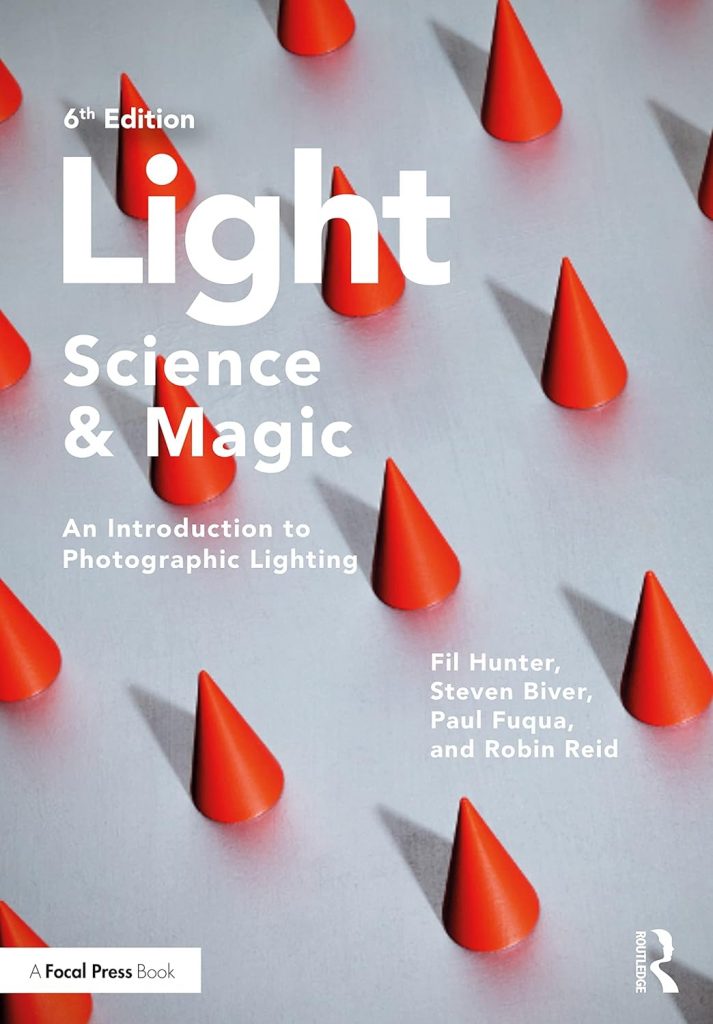Last Updated on November 10, 2025
From the book Light—Science and Magic

Lots of great, insightful, and important lessons in Light—Science and Magic, but not every word in the book (or even every chapter) is an essential re-read. These I think are the salient bits, the things we really need to know and remember. I’ll be referring to the book’s 6th edition (published in 2021).
Chapter 1
Most of Chapter 1 can be skipped. The only important part is the initial statement of the three “principles” of light:
- The effective size of the light source is the single most important decision in lighting a photograph. It determines what types of shadows are produced and may also affect the type of refection.
- Three types of refections are possible from any surface: direct refection, diffuse refection, and polarized direct refection. They determine why any surface looks the way it does.
- Some of these refections occur only if light strikes the surface from within a limited family of angles. After we decide what type of refection is important, the family of angles determines where the light should or should not be.
Chapter 2
What is light? A brief discussion about its nature and qualities throughout this chapter.
Light is a type of electromagnetic radiation (ER). The ER that is visible to human eyes is called “light.” The other types of ER include X-rays, infrared, ultraviolet, radar, radio, and so on, which are not visible to human eyes.
Three characteristics of light are of concern to photographers:
- Brightness
- Color
- Contrast. (A light source has high contrast if its rays all strike the subject from nearly the same angle. Light rays from a low-contrast source strike the subject from many different angles. Essentially, the contrast of the light source is revealed by the appearance of the shadow it produces: a crisp shadow edge indicates high contrast; a diffused shadow edge indicates low contrast.)
Lighting is ultimately a relationship between the light, the subject, and the viewer. So how does the subject itself affect light/lighting and our perception of it?
The subject can do three things when light strikes it: it can transmit, absorb, or reflect the light.
- Transmission. Light that passes through a subject is transmitted. Think glass here–bottles and windows.
Chapter 3
This chapter deals entirely with reflection, reflection management, and the family of angles. It’s pretty much the heart of the book.



